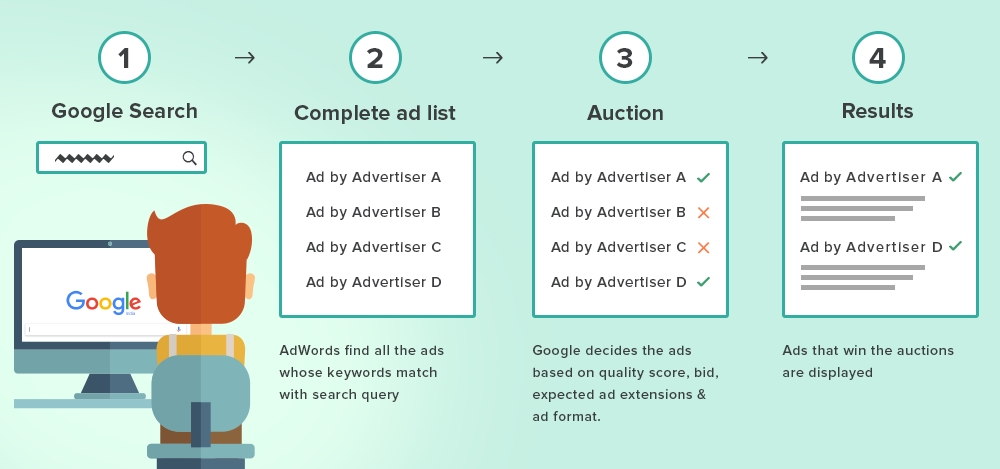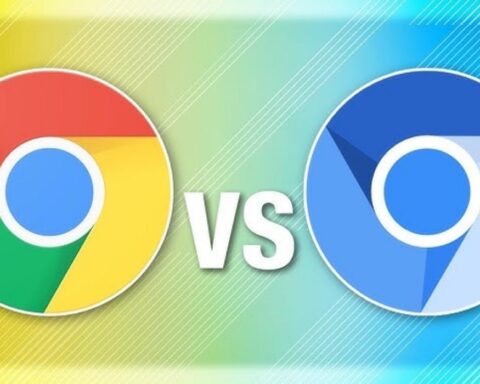If you’ve ever typed something into Google and noticed a mix of paid ads and organic search results, you might have wondered, how does Google decide which ads go on top? Why do some companies appear consistently, while others never seem to show up? The answer lies in Google’s ad auction system, a complex yet logical process that determines placement based on both bid amounts and ad quality. Businesses that work with professional ppc management teams often have a clearer understanding of this system, which allows them to compete effectively without wasting budget.
This isn’t about “who spends the most money” alone. Google Ads operates more like a competitive marketplace where relevance, user experience, and smart bidding strategies play as big a role as raw advertising spend. Understanding the basics of how Google decides which ads to display can help business owners make more informed decisions about their online advertising.
1. The Google Ads Auction: More Than Just Bidding
At its core, Google’s ad system works like an auction. When someone searches for a keyword, Google runs a lightning-fast competition between all the advertisers targeting that keyword at that moment. But unlike traditional auctions, the winner isn’t simply the highest bidder.
Instead, Google considers two main factors:
- Your maximum bid – the most you’re willing to pay for a click.
- Your Quality Score – a measure of the relevance and quality of your ads, keywords, and landing pages.
These combine to form your Ad Rank, which determines whether your ad will appear and where it will be placed on the page.
How Ad Rank Works
The formula is straightforward:
Ad Rank = Maximum Bid × Quality Score
A high Ad Rank means better placement, often at the top of the search results. But importantly, you could have a lower bid than a competitor and still outrank them if your Quality Score is significantly higher.
2. Quality Score: The Hidden Lever of Ad Performance
Many business owners assume Google only cares about money, but the platform’s long-term success depends on delivering relevant, helpful ads to users. This is where Quality Score comes in.
What Is Quality Score?
Quality Score is rated on a scale from 1 to 10 and is based on:
- Expected Click-Through Rate (CTR): How likely it is that your ad will be clicked when shown.
- Ad Relevance: How closely your ad matches the searcher’s intent and keyword.
- Landing Page Experience: Whether your landing page is relevant, loads quickly, and provides a good user experience.
Why Quality Score Matters
A high Quality Score means:
- Your ads can rank higher without raising your bids.
- You might pay less per click than competitors with lower scores.
- You’re more likely to show in competitive ad spaces.
Think of Quality Score as Google’s way of rewarding advertisers who create ads that users actually want to see.
3. The Role of Keywords and Match Types
Keywords are the bridge between what people search for and the ads they see. When you select keywords in Google Ads, you’re telling Google, “I want my ad to show when someone searches for these terms.”
Keyword Match Types
- Broad Match: Your ad may show on searches related to your keyword, even if the terms aren’t exact.
- Phrase Match: Your ad shows when the search includes the meaning of your keyword phrase.
- Exact Match: Your ad appears only when the search matches your keyword exactly or is a close variant.
The match type you choose influences how often your ad enters the auction and for what kinds of searches. Too broad, and you might get irrelevant clicks. Too narrow, and you might miss potential customers.
4. The Impact of Ad Extensions and Formats
Google also considers the usefulness of your ad’s format. Ad extensions, extra pieces of information like phone numbers, site links, location info, or callouts, can make your ad more appealing and take up more space in the results.
Why Ad Extensions Help
- They improve your click-through rate by offering more reasons to engage.
- They provide useful details upfront, which can increase user trust.
- Google tends to favor ads with relevant extensions because they enhance the search experience.
Advertisers who make use of extensions often see better placement without necessarily increasing their bids.
5. How Bidding Strategies Influence Visibility
While your maximum bid isn’t the only factor in ad placement, it still plays a significant role. Google Ads offers several bidding strategies, each designed for different goals:
- Manual CPC (Cost Per Click): You set the maximum you’re willing to pay for each click.
- Enhanced CPC: Google automatically adjusts your manual bids to get more conversions.
- Maximize Clicks: Automatically sets bids to get as many clicks as possible within your budget.
- Target CPA (Cost Per Acquisition): Focuses on getting conversions at your target cost.
- Target ROAS (Return on Ad Spend): Aims for the highest possible revenue based on your target return.
Choosing the right bidding strategy can help you compete more effectively without overspending.
6. The Role of Search Context
When deciding which ads to show, Google doesn’t just look at bids and Quality Scores, it also considers the context of the search. This includes:
- Location: Ads can be tailored to appear only in specific regions.
- Device Type: Whether the user is on a desktop, mobile, or tablet.
- Time of Day: Ads can be scheduled to appear during certain hours.
- Search History: Past activity can influence which ads a user is shown.
This contextual targeting allows advertisers to reach the right person at the right time, which benefits both the searcher and the advertiser.
7. Competing in the Auction Without Overspending
It’s possible to compete in Google’s ad auction without having the largest budget. Here’s how many successful advertisers do it:
Focus on Relevance
Write ads that speak directly to what your target audience is searching for. This boosts your click-through rate and improves your Quality Score.
Optimize Landing Pages
Ensure that when someone clicks your ad, they land on a page that’s fast, relevant, and easy to navigate. The smoother the experience, the better your Quality Score.
Use Negative Keywords
Negative keywords prevent your ad from showing up for irrelevant searches, saving budget and improving performance.
Test and Adjust
Run multiple ad variations and monitor performance. Even small changes to wording, headlines, or extensions can impact results.
8. Why Understanding the Process Matters
For many business owners, Google Ads can seem like a black box where money goes in and clicks come out. But understanding how the system works, especially the role of Quality Score and Ad Rank—can transform how you approach your campaigns.
Instead of simply raising bids to beat competitors, you can focus on improving relevance, enhancing landing pages, and using smarter targeting. This leads to better placement, more clicks from the right people, and ultimately a better return on your investment.
Final Thoughts: Winning with Smart Strategy
Google’s decision-making process for ad placement balances both the advertiser’s needs and the user’s experience. It rewards ads that are relevant, useful, and backed by strong landing pages, even if those ads don’t come from the highest bidder.
By understanding the interplay between bids, Quality Score, ad formats, and context, businesses can position themselves for success in the ad auction, often without dramatically increasing their budget. In short, the best ads to show are the ones that make both Google and the searcher happy.








